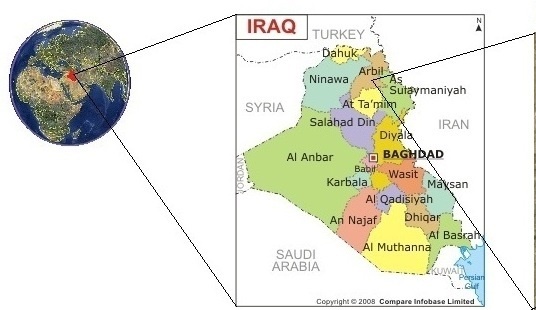Erbil residents' daily consumption of heavy metals via sewage and well water-irrigated veggies
DOI:
https://doi.org/10.21271/ZJPAS.35.4.13Keywords:
Keyword: Heavy metal, Vegetables, Wastewater, Well water , Health risk.Abstract
In Erbil city the farmers used both wastewater and well water for irrigation pupose. An inductively coupled plasma ICP was used to analyze heavy metals., including silver (Ag), aluminum (Al), iron (Fe), manganese (Mn), nickel (Ni), lead (Pb), zinc (Zn), chrome (Cr), cadmium (Cd), and arsenic (As), in wastewater, well water, agricultural soils, and vegetables (Chard, Celery, Arugula, Leek and Dill), as well as the health risks they pose in Erbil. Bio-concentration factor (BCF), daily intake (DI), Target Hazard Quotient (THQ), and carcinogenic risks (CR) were calculated to determine health concerns. Overall, metals were found in water, soil, and vegetables. The following is a rundown of the tendencies in these metals' Ni<Ag < Zn < Cr < Mn < Cd < As < Fe < Al < Pb, in the wastewater and well water and As<Ag <Cr< Fe< Cd< Ni< Zn< Mn< Al< Pb in the soil. In the vegetable samples, the mean values mg kg-1 varied from 0.74-13.90, 12.90- 41.70, 2.59- 30.40, 573–1810, 93–292, 2.44 –31.65, 23.10–116, 138–448, 13.70- 40.13 and 1.55 to 14.91, for As, Cd, Cr, Al, Pb, Ni, Mn, Fe, Zn, Ag, respectively, Cd, Pb, and Mn in chard, Arugula, and celery irrigated with wastewater and well water exceeded WHO/FAW adult safe limits. As, Cd, and Pb THQs were larger than unity in all veggies except sites 2 and 4 for As. Al in sites 1,4,6, and Mn in all sites from Chard plants had THQs > 1. As, Cd, and Cr's CR values above 10-4. These results show that local farmers' habit of irrigating vegetables with untreated wastewater and well water has generated heavy metal deposition in the soils, which is absorbed by vegetables and poses a health concern to the local people.
References
ADEDOKUN, A. H., NJOKU, K. L., AKINOLA, M. O., ADESUYI, A. A. & JOLAOSO, A. O. 2016. Potential human health risk assessment of heavy metals intake via consumption of some leafy vegetables obtained from four market in Lagos Metropolis, Nigeria. Journal of Applied Sciences and Environmental Management, 20, 530-539.
AHMED, M. J. K. & AHMARUZZAMAN, M. 2016. A review on potential usage of industrial waste materials for binding heavy metal ions from aqueous solutions. Journal of Water Process Engineering, 10, 39-47.
AKSOY, A., DEMIREZEN, D. & DUMAN, F. 2005. Bioaccumulation, detection and analyses of heavy metal pollution in Sultan Marsh and its environment. Water, air, and soil pollution, 164, 241-255.
AKTER, S., GOTO, A. & MIZOUE, T. 2017. Smoking and the risk of type 2 diabetes in Japan: a systematic review and meta-analysis. Journal of epidemiology, 27, 553-561.
ALSAFRAN, M., USMAN, K., RIZWAN, M., AHMED, T. & AL JABRI, H. 2021. The carcinogenic and non-carcinogenic health risks of metal (oid) s bioaccumulation in leafy vegetables: a consumption advisory. Frontiers in Environmental Science, 380.
AVCI, H. & DEVECI, T. 2013. Assessment of trace element concentrations in soil and plants from cropland irrigated with wastewater. Ecotoxicology and environmental safety, 98, 283-291.
AYSHA, M., ZAKIR, H., HAQUE, R., QUADIR, Q., CHOUDHURY, T. R., QURAISHI, S. & MOLLAH, M. 2017. Health risk assessment for population via consumption of vegetables grown in soils artificially contaminated with arsenic. Archives of Current Research International, 10, 1-12.
BIAN, B., LIN, C. & LV, L. 2016. Health risk assessment of heavy metals in soil-plant system amended with biogas slurry in Taihu basin, China. Environmental Science and Pollution Research, 23, 16955-16964.
BOSE, S. & BHATTACHARYYA, A. 2008. Heavy metal accumulation in wheat plant grown in soil amended with industrial sludge. Chemosphere, 70, 1264-1272.
CHAOUA, S., BOUSSAA, S., EL GHARMALI, A. & BOUMEZZOUGH, A. 2019. Impact of irrigation with wastewater on accumulation of heavy metals in soil and crops in the region of Marrakech in Morocco. Journal of the Saudi Society of Agricultural Sciences, 18, 429-436.
COMMISSION, F. W. C. A. 2001. Food additives and contaminants. Joint FAO. WHO Food Standards Programme, ALINORM, 1, 1-289.
DENG, Y., WANG, M., TIAN, T., LIN, S., XU, P., ZHOU, L., DAI, C., HAO, Q., WU, Y. & ZHAI, Z. 2019. The effect of hexavalent chromium on the incidence and mortality of human cancers: a meta-analysis based on published epidemiological cohort studies. Frontiers in oncology, 9, 24.
EDOKPAYI, J. N., ODIYO, J. O. & DUROWOJU, O. S. 2017. Impact of wastewater on surface water quality in developing countries: a case study of South Africa. Water quality, 10, 66561.
EL-AMIER, Y. A., BONANOMI, G., AL-ROWAILY, S. L. & ABD-ELGAWAD, A. M. 2020. Ecological risk assessment of heavy metals along three main drains in Nile Delta and potential phytoremediation by macrophyte plants. Plants, 9, 910.
EMEMU, A. & NWANKWOALA, H. 2018. Application of Water Quality Index (Wqi) For Agricultural and Irrigatio nal Use Around Okpoko, Southeastern Nigeria. Engineering Heritage Journal (GWK), 2, 14-18.
ESPOSITO, F., NARDONE, A., FASANO, E., SCOGNAMIGLIO, G., ESPOSITO, D., AGRELLI, D., OTTAIANO, L., FAGNANO, M., ADAMO, P. & BECCALONI, E. 2018. A systematic risk characterization related to the dietary exposure of the population to potentially toxic elements through the ingestion of fruit and vegetables from a potentially contaminated area. A case study: The issue of the" Land of Fires" area in Campania region, Italy. Environmental Pollution, 243, 1781-1790.
GEBEYEHU, H. R. & BAYISSA, L. D. 2020. Levels of heavy metals in soil and vegetables and associated health risks in Mojo area, Ethiopia. PloS one, 15, e0227883.
GUPTA, N., KHAN, D. & SANTRA, S. 2012. Heavy metal accumulation in vegetables grown in a long-term wastewater-irrigated agricultural land of tropical India. Environmental Monitoring and Assessment, 184, 6673-6682.
HASSON, S. S. A. A., AL-BUSAIDI, J. K. Z. & SALLAM, T. A. 2015. The past, current and future trends in DNA vaccine immunisations. Asian Pacific Journal of Tropical Biomedicine, 5, 344-353.
HAWRAMI, K. A., CROUT, N. M., SHAW, G. & BAILEY, E. H. 2020. Assessment of potentially toxic elements in vegetables cultivated in urban and peri-urban sites in the Kurdistan region of Iraq and implications for human health. Environmental geochemistry and health, 42, 1359-1385.
HUSSAIN, M. I. & QURESHI, A. S. 2020. Health risks of heavy metal exposure and microbial contamination through consumption of vegetables irrigated with treated wastewater at Dubai, UAE. Environmental Science and Pollution Research, 27, 11213-11226.
ISLAM, M., ROMIĆ, D., AKBER, M. & ROMIĆ, M. 2018. Trace metals accumulation in soil irrigated with polluted water and assessment of human health risk from vegetable consumption in Bangladesh. Environmental geochemistry and health, 40, 59-85.
ISLAM, M. S., HAN, S., AHMED, M. K. & MASUNAGA, S. 2014. Assessment of trace metal contamination in water and sediment of some rivers in Bangladesh. Journal of water and environment technology, 12, 109-121.
KACHENKO, A. G. & SINGH, B. 2006. Heavy metals contamination in vegetables grown in urban and metal smelter contaminated sites in Australia. Water, air, and soil pollution, 169, 101-123.
KILUNGA, P. I., SIVALINGAM, P., LAFFITE, A., GRANDJEAN, D., MULAJI, C. K., DE ALENCASTRO, L. F., MPIANA, P. T. & POTE, J. 2017. Accumulation of toxic metals and organic micro-pollutants in sediments from tropical urban rivers, Kinshasa, Democratic Republic of the Congo. Chemosphere, 179, 37-48.
LATIF, A., BILAL, M., ASGHAR, W., AZEEM, M., AHMAD, M. I., ABBAS, A., AHMAD, M. & SHAHZAD, T. 2018. Heavy metal accumulation in vegetables and assessment of their potential health risk. J. Environ. Anal. Chem, 5, 2380-2391.10002.
LI, X., LI, Z., LIN, C.-J., BI, X., LIU, J., FENG, X., ZHANG, H., CHEN, J. & WU, T. 2018. Health risks of heavy metal exposure through vegetable consumption near a large-scale Pb/Zn smelter in central China. Ecotoxicology and environmental safety, 161, 99-110.
LOOMIS, D., GUHA, N., HALL, A. L. & STRAIF, K. 2018. Identifying occupational carcinogens: an update from the IARC Monographs. Occupational and environmental medicine, 75, 593-603.
MAHDAVI, M., AMIN, M. M., MAHVI, A. H., POURZAMANI, H. & EBRAHIMI, A. 2018. Metals, heavy metals and microorganism removal from spent filter backwash water by hybrid coagulation-UF processes. Journal of Water Reuse and Desalination, 8, 225-233.
MAHMOOD, A., MAHMOUD, A. H., EL-ABEDEIN, A. I. Z., ASHRAF, A. & ALMUNQEDHI, B. M. 2020. A comparative study of metals concentration in agricultural soil and vegetables irrigated by wastewater and tube well water. Journal of King Saud University-Science, 32, 1861-1864.
MALEKI, A. & ZARASVAND, M. A. 2008. Heavy metals in selected edible vegetables and estimation of their daily intake in Sanandaj, Iran. Southeast Asian journal of tropical medicine and public health, 39, 335.
MANZOOR, J., SHARMA, M. & WANI, K. A. 2018. Heavy metals in vegetables and their impact on the nutrient quality of vegetables: A review. Journal of plant Nutrition, 41, 1744-1763.
MENG, J., TAO, M., WANG, L., LIU, X. & XU, J. 2018. Changes in heavy metal bioavailability and speciation from a Pb-Zn mining soil amended with biochars from co-pyrolysis of rice straw and swine manure. Science of the Total Environment, 633, 300-307.
NAEEM, K., YAWAR, W., AKHTER, P. & REHANA, I. 2012. Atomic absorption spectrometric determination of cadmium and lead in soil after total digestion. Asia‐Pacific Journal of Chemical Engineering, 7, 295-301.
PANEL, R. A. S. A. & HUMAN, H. D. I. 2010. US Environmental Protection Agency (EPA).
PANSU, M. & GAUTHEYROU, J. 2007. Handbook of soil analysis: mineralogical, organic and inorganic methods, Springer Science & Business Media.
QADIR, M., WICHELNS, D., RASCHID-SALLY, L., MCCORNICK, P. G., DRECHSEL, P., BAHRI, A. & MINHAS, P. 2010. The challenges of wastewater irrigation in developing countries. Agricultural water management, 97, 561-568.
REHMAN, Z. U., SARDAR, K., SHAH, M. T., BRUSSEAU, M. L., KHAN, S. A. & MAINHAGU, J. 2018. Transfer of heavy metals from soils to vegetables and associated human health risks at selected sites in Pakistan. Pedosphere, 28, 666-679.
REZAPOUR, S., ATASHPAZ, B., MOGHADDAM, S. S. & DAMALAS, C. A. 2019. Heavy metal bioavailability and accumulation in winter wheat (Triticum aestivum L.) irrigated with treated wastewater in calcareous soils. Science of the Total Environment, 656, 261-269.
RICE, E. W., BAIRD, R. B., EATON, A. D. & CLESCERI, L. S. 2012. Standard methods for the examination of water and wastewater, American public health association Washington, DC.
SAMSURI, A., TARIQ, F., KARAM, D., ARIS, A. & JAMILU, G. 2019. The effects of rice husk ashes and inorganic fertilizers application rates on the phytoremediation of gold mine tailings by vetiver grass. Applied Geochemistry, 108, 104366.
SATPATHY, D., REDDY, M. V. & DHAL, S. P. 2014. Risk assessment of heavy metals contamination in paddy soil, plants, and grains (Oryza sativa L.) at the East Coast of India. BioMed research international, 2014.
SAYO, S., KIRATU, J. M. & NYAMATO, G. S. 2020. Heavy metal concentrations in soil and vegetables irrigated with sewage effluent: A case study of Embu sewage treatment plant, Kenya. Scientific African, 8, e00337.
SHAJI, E., SANTOSH, M., SARATH, K., PRAKASH, P., DEEPCHAND, V. & DIVYA, B. 2021. Arsenic contamination of groundwater: A global synopsis with focus on the Indian Peninsula. Geoscience frontiers, 12, 101079.
SHEKHA, Y. A. 2016. Evaluation of water quality for Greater Zab River by principal component analysis/factor analysis. iraqi Journal of Science, 2650-2663.
SINGH, A., SHARMA, R. K., AGRAWAL, M. & MARSHALL, F. M. 2010. Risk assessment of heavy metal toxicity through contaminated vegetables from waste water irrigated area of Varanasi, India. Tropical ecology, 51, 375-387.
SOLIDUM, J., DYKIMCHING, E., AGACETA, C. & CAYCO, A. Assessment and identification of heavy metals in different types of cooked rice available in the Philippine market. 2nd international conference on environmental and agriculture engineering IPCBEE, 2012. 35-39.
TARIQ, F., SAMSURI, A., KARAM, D. & ARIS, A. 2016. Phytoremediation of gold mine tailings amended with iron-coated and uncoated rice husk ash by vetiver grass (Vetiveria zizanioides (Linn.) Nash). Applied and Environmental Soil Science, 2016.
TARIQ, F., SAMSURI, A., KARAM, D., ARIS, A. & JAMILU, G. 2019. Bioavailability and mobility of arsenic, cadmium, and manganese in gold mine tailings amended with rice husk ash and Fe-coated rice husk ash. Environmental monitoring and assessment, 191, 1-12.
TOTH, T., TOMáŠ, J., LAZOR, P., BAJČAN, D. & JOMOVá, K. 2009. The transfer of heavy metals from contaminated soils into agricultural plants in High Tatras region. Czech J. Food Sci, 27, 390-393.
WEN, X., LU, J., WU, J., LIN, Y. & LUO, Y. 2019. Influence of coastal groundwater salinization on the distribution and risks of heavy metals. Science of the Total Environment, 652, 267-277.
ZHANG, L., QIN, X., TANG, J., LIU, W. & YANG, H. 2017. Review of arsenic geochemical characteristics and its significance on arsenic pollution studies in karst groundwater, Southwest China. Applied geochemistry, 77, 80-88.
ZHOU, T., JIANG, L.-L., SU, R.-Q. & ZHANG, Y.-C. 2008. Effect of initial configuration on network-based recommendation. EPL (Europhysics Letters), 81, 58004.
ZINATLOO-AJABSHIR, S., MORASSAEI, M. S. & SALAVATI-NIASARI, M. 2019. Eco-friendly synthesis of Nd2Sn2O7–based nanostructure materials using grape juice as green fuel as photocatalyst for the degradation of erythrosine. Composites Part B: Engineering, 167, 643-653.

Downloads
Published
How to Cite
Issue
Section
License
Copyright (c) 2023 Abdulqader M. Younis, Dlshad A. Darwesh

This work is licensed under a Creative Commons Attribution 4.0 International License.













